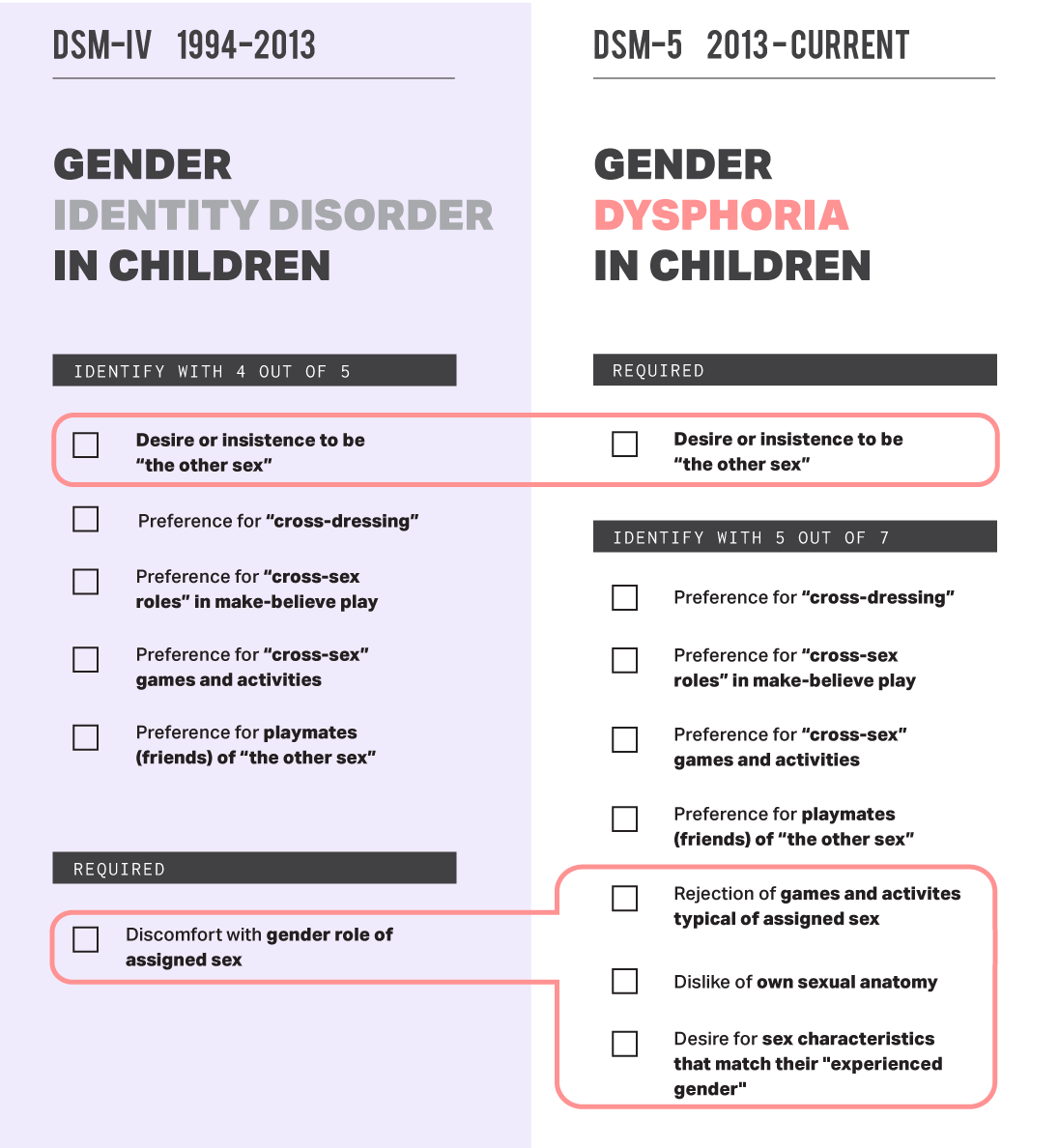In an article published in the opinion section of The New York Times, opinion columnist Pamela Paul wrote a 4,500-word article filled with factual errors and unfounded assumptions about transgender care and the lived experiences of transgender people. Although the article is presented as a piece on detransitioners, the interviews serve as vehicles through which Paul packages inaccuracies and disinformation with faulty citations and claims that are not supported by the evidence she presents. The article is the latest in a series published by The New York Times to do so, and a simple fact check of the claims presented easily debunks the article's central premises as highly misleading.
It is notable that this is not the first time Paul has waded into LGBTQ+ issues with the seeming goal of covering for anti-LGBTQ+ policies. Previously, she wrote an article criticizing LGBTQ+ organizations for the use of the word “queer,” a word that many LGBTQ+ people use to describe themselves. She has written articles accusing transgender people of “erasing women.” However, this article is certainly her longest and most in depth attempt to tackle transgender issues; in doing so, she misses the mark.
Claim: Rapid onset gender dysphoria and transgender social contagion is making people trans.
Fact: Rapid onset gender dysphoria and transgender social contagion is not a validated theory, has been widely debunked as pseudoscience by major medical organizations.
“Most of her patients now, she said, have no history of childhood gender dysphoria. Others refer to this phenomenon, with some controversy, as rapid onset gender dysphoria, in which adolescents, particularly tween and teenage girls, express gender dysphoria despite never having done so when they were younger. Frequently, they have mental health issues unrelated to gender. While professional associations say there is a lack of quality research on rapid onset gender dysphoria, several researchers have documented the phenomenon, and many health care providers have seen evidence of it in their practices.”
At the beginning of the article, Paul discusses "Rapid Onset Gender Dysphoria" and "social contagion" as potential reasons for the apparent increase in transgender individuals in recent years, raising concerns that these individuals will detransition. However, her sources clearly contradict her premise. Her first source, used to support "Rapid Onset Gender Dysphoria," is an article by Lisa Littman that has been retracted. Littman is notably one of the only researchers to argue for the theory, which has been repeatedly dismissed for lacking factual support and for recruiting subjects from anti-trans websites. Recently, unable to validate the theory, she collaborated with Leor Sapir, who lacks a background in transgender mental health care and works at the anti-trans Manhattan Institute, to broaden the definition of "Rapid" so that even a period of two to four years could be considered rapid. She then published it in a journal run by Ken Zucker, an anti-trans "expert" whose clinic was closed following accusations of conversion therapy.
The second set of links, claiming to show "several researchers" documenting the phenomenon, actually refers to only three researchers, not "several." These "researchers" include Lisa Littman's personal website, a retracted article by Michael Bailey (Lisa Littman's treasurer), and another article by Lisa Littman herself. The sources cited for the "documented phenomenon" are the anti-trans website Transgender Trend and a SurveyMonkey poll distributed on Reddit and Twitter.
The only source that correctly represents the consensus is the source showing that professional organizations oppose ROGD as pseudoscientific. In a letter from over 60 psychological organizations, the coalition for the Advancement & Application of Psychological Science calls for the elimination of the term, stating, “There are no sound empirical studies of ROGD” and “there is no evidence that ROGD aligns with the lived experiences of transgender children and adolescents.” Paul, however, simply and misleadingly presents this letter as the organization stating “there is not enough quality research.”
A study in the prestigious journal Pediatrics entirely debunked the concept of ROGD, determining that most transgender people know their gender identity for years before they come out and seek treatment for gender dysphoria. When transgender people finally do come out, many are overjoyed to finally reveal their true self to the world around them - to others, however, the process may seem “rapid.” To ascertain whether transgender identification occurs "rapidly," researchers directly asked transgender teenagers: "How long have you known you were transgender?" They discovered that on average, transgender people know their gender identity for four years before first coming out and presenting for treatment.
Claim: Stephanie Winn, a “licensed marriage and family therapist,” spoke out in favor of “approach gender dysphoria in a more considered way” but then was “investigated” for conversion therapy.
Fact: Stephanie Winn suggested the treatment of transgender youth with acupuncture to “see if they like having needles put in them” and stating it could “help spark desistance.” She also pushed the idea that transgender men should be estrogen to make them feel more feminine.
“They have good reasons to be wary. Stephanie Winn, a licensed marriage and family therapist in Oregon, was trained in gender-affirming care and treated multiple transgender patients. But in 2020, after coming across detransition videos online, she began to doubt the gender-affirming model. In 2021 she spoke out in favor of approaching gender dysphoria in a more considered way, urging others in the field to pay attention to detransitioners, people who no longer consider themselves transgender after undergoing medical or surgical interventions. She has since been attacked by transgender activists. Some threatened to send complaints to her licensing board saying that she was trying to make trans kids change their minds through conversion therapy.
In April 2022, the Oregon Board of Licensed Professional Counselors and Therapists told Winn that she was under investigation. Her case was ultimately dismissed, but Winn no longer treats minors and practices only online, where many of her patients are worried parents of trans-identifying children.”
Paul then attempts to take readers through to other researchers who are, presumably, being “unfairly treated” for their “unorthodox” views on transgender people. One of those people is Stephanie Winn, who she presents as a “licensed marriage and family therapist” in Oregon. She claims that Winn simply spoke out “in favor of approaching gender dysphoria in a more considered way” and was attacked for this. A simple click on Paul’s link, however, shows how this is a highly misleading claim and misrepresents the brutality of what Winn was proposing.
In the thread linked by Paul, Winn muses that transgender men have a “sense of being less feminine” and could be made to feel more feminine by giving them estrogen. There is absolutely no research behind this claim, and in fact, giving transgender people the hormone of their assigned sex at birth has been tried in the past with disastrous effects. In a paper published in 1967 by Harry Benjamin, one of the first major researchers into transgender care, he stated: “I have heard rather frequently in the patient's history that androgen had been used in the past in an attempt to cure the transsexualism by masculinization. It is the wrong treatment. It aggravates the condition by increasing libido without changing its character or direction. Androgen is contraindicated.”
Winn has also advocated for the treatment of transgender youth with acupuncture, stating, “they can see how they like having needles put in them.”
 “So Your Kid Wants To Live As The Opposite Sex” by Stephanie Winn
“So Your Kid Wants To Live As The Opposite Sex” by Stephanie WinnStephanie Winn has not been investigated or attacked simply for “approaching gender dysphoria in a more considered way.” Rather, attacks on Winn are linked to extremely cruel suggestions and musings around how transgender youth should be dealt using cruel, coercive, and painful conversion therapy techniques.
Claim: Transgender people may actually just be gay, and transitioning is a form of “conversion therapy.”
Fact: Gender and sexuality are different, many transgender people identify as gay or bisexual after transition, and gay acceptance is higher than trans acceptance.
Gay men and women often told me they fear that same-sex-attracted kids, especially effeminate boys and tomboy girls who are gender nonconforming, will be transitioned during a normal phase of childhood and before sexual maturation — and that gender ideology can mask and even abet homophobia.
…
“I transitioned because I didn’t want to be gay,” Kasey Emerick, a 23-year-old woman and detransitioner from Pennsylvania, told me. Raised in a conservative Christian church, she said, “I believed homosexuality was a sin.”
The claim that transgender people are “actually just gay” is one that has been made repeatedly by those opposed to gender affirming care, and one that has been repeatedly debunked. Paul wades into this claim by featuring Kasey Emerick, who claims that “believing homosexuality was a sin” played into her transition.
Factually, though, attitudes towards transgender people tend to be “significantly more negative” according to an article in the International Journal of Environmental Research and Public Health. This contributes to a much higher rate of violence and discrimination. Many transgender people, such as celebrity Laverne Cox, report that the most common response to coming out is, “couldn’t you have just been gay?”
According to the 2012 National Transgender Discrimination Survey, most transgender people identify as lesbian, gay, bisexual, or queer after transition. If transition was being used to “cure” being gay, it is a startlingly ineffective cure.
Claim: 80% of transgender individuals desist from being transgender if they go through puberty without intervention, and another study suggests that 30% of individuals stop taking hormone therapy medication.
Fact: Detransition rates are estimated to be between 1-4%. The study citing an 80% detransition rate is based on faulty outdated data, using criteria no longer in use. Furthermore, the study indicating a 30% discontinuation rate is based on military families not refilling their prescriptions through Tricare, rather than actual discontinuation of hormone therapy.
Studies show that around eight in 10 cases of childhood gender dysphoria resolve themselves by puberty and 30 percent of people on hormone therapy discontinue its use within four years, though the effects, including infertility, are often irreversible.
The claim that 80% of transgender youth detransition has been widely debunked and is contradicted by modern research, which indicates regret and detransition rates of 1-4%, according to a review of newer peer-reviewed studies by Cornell University. Recent studies reveal that 97.5% of transgender youth maintain a stable gender identity after five years. The older article Paul references is a journal article in a publication with a very low impact factor; this article does not provide new data, and instead discusses the same two outdated sources commonly associated with the exaggerated "80% detransition rate" claim: Kenneth Zucker’s research from the 1990s on detransition, which uses outdated diagnostic criteria for "gender identity disorder" that misclassified feminine gay men as "disordered," and Steensma’s studies from 2011/2013, known for similar methodological shortcomings.
Both of these studies share a similar problem that explains why the numbers are so different when compared to modern studies around transgender care: they utilize outdated criteria for "gender identity disorder," which misclassified tomboys, masculine lesbians, and effeminate gay men as "disordered." Notably, Zucker advocated for conversion therapy, arguing that "a homosexual lifestyle in a fundamentally unaccepting culture simply creates unnecessary social difficulties." He also employed techniques aimed at coercing trans kids to conform to their assigned sex at birth, such as withholding cross-gender toys and advising parents "not to give in" to their trans youth's desires to wear clothing that aligns with their gender identity.
The old criteria noted that to be diagnosed with “gender identity disorder,” you did not need to desire to be “the other sex.” Instead, the disorder was about gendered behavior that was deemed “too masculine” or “too feminine” by society, and purposefully included gay people who didn’t “act man or woman enough.” The new criteria, however, require the transgender youth to desire or insist to be the other sex.
 Old criteria vs. new criteria
Old criteria vs. new criteria
Steensma’s 2011 and 2013 studies had similar issues in his research, which in some ways had even worse methodological flaws. Steensma used the old criteria, which is not the way that gender dysphoria is diagnosed today. Worse, the two studies classified every youth who did not return to the clinic as having “desisted” or “detransitioned” with no long term follow-up. Half of the participants in the studies did not return and all were classified as having “desisted.” The sample sizes were tiny at the getgo - only 53 people were in the first study and 127 in the second study. Given the fact that a large portion if not the majority of Steensma’s patients were classified under decades old criteria and assumed permanently detransitioned simply for refusing to follow up, these studies cannot be used to make any reasonable claim of high desistance rates.
The last study that Paul refers to is a study released two years ago on military continuance of care. That study looked at all hormone therapy distributed under the military Tricare health insurance plan and determined that 30% of people stopped receiving their hormones through Tricare. What the study does not do, as Paul claims, is support the idea that “30% of people discontinued hormone therapy.” In fact, there are many reasons why people would no longer fill their hormone therapy through a military Tricare plan, especially towards the end of the study in 2017-2018:
- The Trump administration began targeting transgender servicemembers, and many transgender servicemembers likely stopped filling their hormone prescriptions through Tricare for themselves or their family members, fearing being targeted.
- Tricare has notoriously poor transgender care coverage, as evidenced by many military members responding to a thread discussing the results of this study, and many transgender servicemembers may opt to get their medication through a low cost alternative such as Planned Parenthood
- Hormone therapy can be discontinued for surgery, fertility and pregnancy planning, and many other purposes.
- Some nonbinary patients may obtain all the results they wish from hormone therapy before discontinuing, desiring no future results.
- Transgender people may simply have not filled the medication through insurance and instead utilized online pharmacies, which have grown increasingly popular.
- Transgender patients can easily fill prescriptions through GoodRX plans, which would allow them more privacy.
- Transgender people may have been forced off care by military decisions
Even the authors of the article themselves state that they likely overestimate discontinuation:
“We only collected information on medication refills obtained using a single insurance plan. If patients elected to pay out of pocket for hormones, accessed hormones through nonmedical channels, or used a different insurance plan to pay for treatment before and/or after obtaining gender-affirming hormones using TRICARE insurance, we did not capture this information. This means that our findings are likely an underestimate continuation rates among transgender patients.”
There are many more factual errors contained within Paul’s article; it is 4,500 words long and covers virtually every anti-trans claim made in legislative hearings across the United States. Many advocates for transgender people, medical experts, and journalists have weighed in to cover other aspects of Paul’s piece. You can find those here:







































































Charlie Kirk DID say stoning gay people was the 'perfect law' — and these other heinous quotes